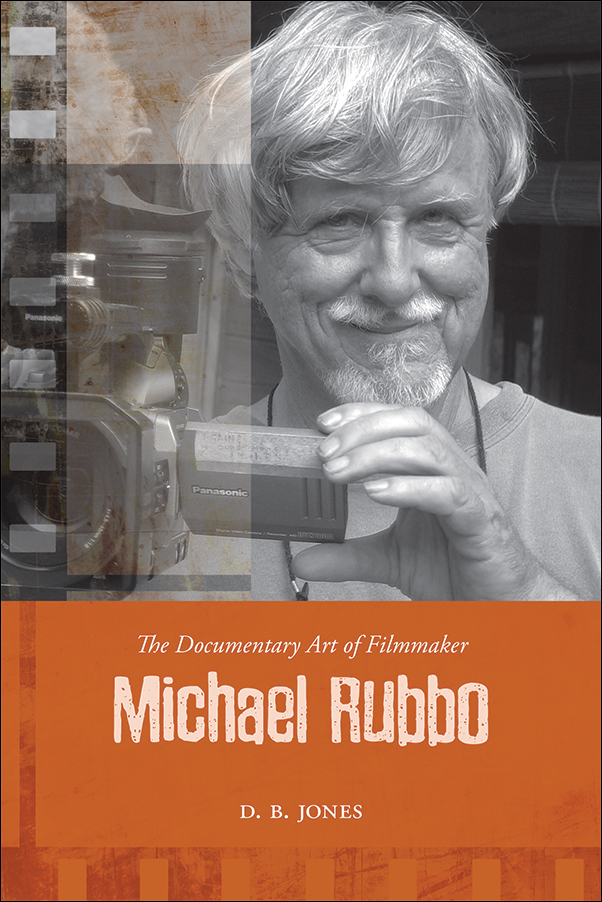
The Documentary Art of Filmmaker Michael Rubbo
D.B. Jones
$34.95 CAD / $34.95 USD
262 pages, 50 illustrations
6 x 9 inches
Paperback: 978-1-55238-870-9
Epub: 978-1-55238-873-0
Library PDF: 978-1-55238-872-3
February 2017
A critical assessment Michael Rubbo’s groundbreaking film career, especially Rubbo’s enduring impact on first-person documentary filmmaking
Michael Rubbo’s groundbreaking work has had a deep and enduring impact on documentary filmmaking worldwide, though his name has remained relatively unknown.
In The Documentary Art of Michael Rubbo, author D.B. Jones traces Rubbo’s filmmaking from his days as a film student at Stanford, through his twenty years at the National Film Board of Canada, where Rubbo developed his distinct documentary style. Jones then follows Rubbo’s post-NFB venture into feature film directing and return to his native Australia, first as an executive with the Australian Broadcasting Corporation and later as a director of feature-length documentaries and maker of short, personal films for YouTube.
Exploring locales from Montreal to Vietnam, topics as diverse as plastic surgery and French Marxism, and from interviewing Margaret Atwood to documenting a failed attempt to interview Fidel Castro, Rubbo’s wide-ranging work establishes his innovative, personal, lyric, and spontaneous documentary style. In The Documentary Art of Michael Rubbo D.B. Jones reveals not only the depth of meaning in Rubbo’s films, but also the depth of their influence on filmmaking itself.
D.B. Jones has written, directed, or produced documentary films for American public broadcasting, Film Australia, Dutch National Television, and others. Jones is Distinguished Professor of Film at Drexel University, and has taught at La Trobe and Stanford. He is the author of Movies and Memoranda: An Interpretive History of the National Film Board of Canada (1982) and The Best Butler in the Business: Tom Daly and the National Film Board of Canada (1996).
Illustrations
Acknowledgments
Introduction
Purpose and Method
Learning the Craft
The True Source of Knowledge These Days
Early Films at the NFB
Making it Personal
Sad Song of Yellow Skin
Nudging Things Along
Persistent and Fenagling
Filmmaker Front and Center
Wet Earth and Warm People
Family matters
OK . . . Camera; The Streets of Saigon; Jalan, Jalan; The Man Who Can’t Stop
How It Works
Waiting for Fidel; I, Am an Old Tree
Where the Action Isn’t
Log House; The Walls Come Tumbling Down; I Hate to Lose; Tigers and Teddy Bears
Something’s Happening
Solzhenitsyn’s Children . . . Are Making a Lot of Noise in Paris
Facial Expressions
Yes or No; Jean-guy Morneau; Daisy: The Story of a Facelift; Not Far from Bolgatanga
Long Shots
Margaret Atwood: Once in August; Atwood and Family
A Break from "Reality"
The Peanut Butter Solution; Tommy Tricker and the Stamp Traveler, Vincent and Me; The Return of Tommy Tricker
New Tools of the Trade
ABC; The Little Box that Sings; Much Ado About Something; All About Olive
Plein Air Documentary
YouTube films; Bicycle Art; Painting with Film
Conclusion
Influence . . . Comparisons . . . Importance
Notes
Works Cited
Index
Nobody knows the NFB like D.B. Jones, and nobody writes about documentary like him either. This is a terrific book: punchy, detailed, and eye-opening.
—Jerry White, Dalhousie University
Michael Rubbo brought to documentary . . . the voice of a filmmaker who entered the reality he was recording—doing so with unfailingly intellectual curiosity, good humor, and compassion. Rubbo’s films underscore the importance of cultural and political differences. But more importantly, they allow us to appreciate those profound aspects of our shared humanity.
—Karen Cooper, Director, Film Forum NYC
D.B. Jones urges us to recognize and appreciate the extensive oeuvre of Michael Rubbo’s work in documentary film . . . the missing link between French cinéma verité and first-person, autobiographical, deeply personal essay film that arose in North America from the relics of the staid observational aesthetic.
—Gaurav Pai, Alphaville: Journal of Film and Screen Media
1. Learning the Craft - The True Source of Knowledge These Days; Early Films at the NFB
5. Family Matters - OK … Camera; The Streets of Saigon; Jalan, Jalan; The Man Who Can’t Stop
8. Something’s Happening - Solzhenitsyn’s Children … Are Making a Lot of Noise in Paris
10. Long Shots - Margaret Atwood: Once in August; Atwood and Family
13. Plein Air Documentary - YouTube films; Bicycle Art; Painting with Film